20 Best Jogging Tips For Better Health And Fitness
Warming up and wearing the right running shoes will help you run those miles easily.

Image: Shutterstock
Congratulations! You have taken one of the biggest leaps in your journey toward a healthy lifestyle by deciding to jog. Looking for some jogging tips? Before we go ahead, let’s talk about what jogging actually does for your health. Studies suggest that this slow running technique reduces the risk of diabetes, hypertension, anxiety, depression, cardiovascular diseases, and obesity (1), (2), (3). Moreover, it helps you increase your productivity and stamina.

In this article, we have listed some tips to help you get started with your jogging. Take a peek!
 Workout Blueprint: Jogging
Workout Blueprint: Jogging- Frequency: Daily
- Benefits: Aids weight loss and improves cardiovascular and lung health.
- Equipment Needed: None
- Space Required: Large, open area
- Assistance Required: No
- Who Should Avoid: People with poor joint conditions like arthritis or joint injuries.
In This Article
Jogging Benefits
1. Helps In Weight Loss And Burns Calories
Jogging, walking, outdoor running, trail running, running on the treadmill, or any kind of aerobic exercise can aid weight loss.
In a study published in the British Journal of Sports Medicine, students who jogged 4.8 km lost 9.4% more body fat than the control group (students who did not jog) (4).
Jogging can also help you lose more weight compared to just walking (5).
2. Improves Cardiovascular Health

Jogging has always been considered one of the best exercises for the heart. This aerobic exercise supports increased physical activity that can help improve the cholesterol levels of overweight men and women.
In a 2002 study, people who jogged showed better cardiovascular health and cholesterol levels as compared to those who did not (6). Thus, jogging benefits your heart and leads to better circulation of blood.
3. Improves Lung Health
Like other aerobic exercises, jogging helps in boosting lung capacity and strengthening respiratory muscular activities (7).
4. Improves Bone Strength
Jogging can help enhance bone health and prevent bone loss among postmenopausali Relating the period after menopause, when a woman’s period has been absent for more than a year (usually occurs in their 40s and 50s). women
(8).
5. Helps Tone Muscles
Jogging helps tone the hamstring, calf, and gluteal muscles. Aerobic exercises like walking, jogging, and running can help increase skeletal muscle mass and functional capacity (9).
 Did You Know?
Did You Know?6. Lowers Depression And Stress
Any form of exercise, either aerobic or anaerobic, can help reduce anxiety and depression (10).
Studies showed that aerobic exercise (like jogging) improved stress symptoms and quality of life (QOL) (11).
7. Improves Mental Health
Jogging can help in improving mental health. It can boost mood and help you feel better (12).
8. Boosts Stamina And Endurance

Aerobic exercises (like jogging) can help build strength, stamina, endurance, and flexibility (13).
9. Improves Flexibility Of Spine
Jogging can help hydrate your spine and exert less pressure on the spinal discs.
One study showed that jogging for a longer time could help in better disc hydration (14).
10. Improves Insulin Action
Any kind of aerobic exercise improves insulin sensitivityi Responsiveness of the body’s cells to insulin needed to lower blood glucose levels. and carbohydrate metabolism.
According to a study published in the Journal of Applied Physiology, long-term mild jogging could help improve insulin action and increase insulin secretion rate by 87% (15).
11. Improves Mortality Rate
A study published in the Global Cardiology Science & Practice Journal showed that a slow or moderate pace of jogging three times a week could help lower the mortality rate (death rate) (16).
In a study to investigate the impact of running on cardiovascular and cancer mortality, 232,149 pooled samples were analyzed. It showed that running could be associated with 27% fewer cardiovascular complications and 30% decrease in cancer mortality rates as compared to zero running activity. It suggests that any amount of running, regardless of intensity or duration, can improve health and longevity.
Now that you are aware of the many health benefits of jogging, follow the below-mentioned 20 jogging tips for beginners as well as pros.
Key Takeaways
- Jogging may improve overall heart health by keeping cholesterol levels in check.
- It may help in boosting lung capacity.
- Warm up before starting your workout.
- Stay hydrated to prevent dehydration and replenish the loss of fluid during exercise.
- Set realistic targets and incorporate different terrains in the jogging routine, and keep yourself motivated.
20 Effective Jogging Tips
1. Warm-Up
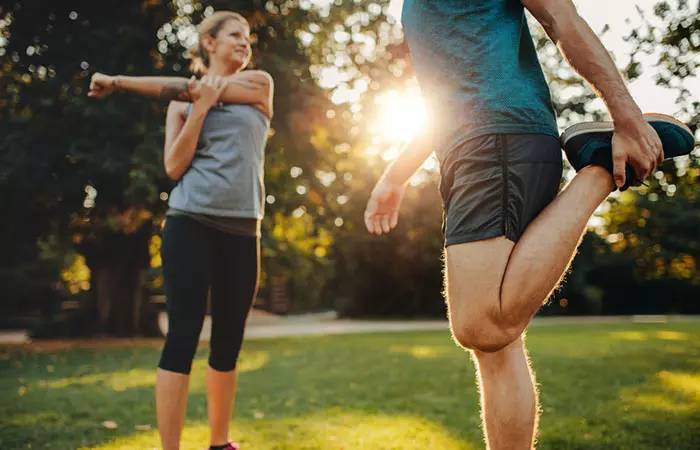
Warm-up exercises are important to elevate body temperature, metabolic ratei The amount of energy in joules, calories, or kilocalories per unit of time that a person spends over a particular period. rate , and oxygen uptake (17). It also helps prep the muscles for endurance training. You will be able to exercise more effectively without the risk of injuring yourself.
Your muscles undergo constant contraction and relaxation when you jog. If you don’t prep them, you can get muscle cramps and may not be able to walk or jog properly.
2. Set A Goal
Setting a goal can help you achieve the desired outcome. Plan your goal, break it down into small milestones, and keep track of your performance and achievements.
For example, set a goal that says, “I will jog 2 miles today, and by the end of the month, I should be able to jog 5 miles at a stretch.” This goal will keep you motivated and focused, and you will soon be able to run long distances without feeling weak or out of breath.
3. Wear Running Shoes
The next most important thing is to wear the right shoes. Shoes help protect your feet and bones from the impact of the thrust they experience when you jog. Remember to choose the right shoes according to your requirements.
Wear comfortable running or training shoes that can absorb shock. Talk to an orthopedic doctor if you need specially made orthopedic shoes for jogging.
 Quick Tip
Quick Tip4. Loosen Up
Loosen your body so that all the tension from your shoulders, neck, arms, legs, and feet is released. Stretching before exercise can help improve muscle flexibility and loosen the joints (18).
Stretching can help you jog for a long duration and prevents muscle cramps. Shake your hands and feet to loosen your body.
5. Push Your Chest Out
It is important to maintain good posture and balance while exercising. Improper posture and weak core muscles cause slumping and slouching and hamper proper balance. It may strain your pelvis, spine, muscles, tendons, which can cause fatigue (19).
Make sure your chest is out, and shoulders are rolled back to prevent spinal injuries and improve your posture.
6. Start Slowly
Start slowly by walking first. Increase your walking pace after 30 seconds. By the end of 60 seconds, you should be brisk walking. Start jogging at a slow pace.
This technique will prevent you from burning out quickly. You will be able to jog for long distances easily, which, in turn, will make you fitter and healthier quickly.
7. Land Softly
Stomping your feet will only injure your knees. Hence, it is important to land softly on the ground on the balls of your feet to dissipate the shock and not hit your knees directly.
8. Use Breathing Techniques
Deep breathing before exercising is important as it pumps enough oxygen into the cells and improves lung capacity (20). Deep inhalation-exhalation techniques and maintaining a continuous flow of breath are important to prevent muscle fatigue.
Count your steps and breathe in and out. For example, breathe in slowly through your nose for four steps and then exhale slowly through your nose for the next four steps. Also, when you are almost fatigued and feel like giving up, start breathing in through the nose and exhaling with force through your mouth.
9. Jog In Different Directions
Jogging in zig-zag and lateral motions and changing direction frequently will help train your leg muscles to be able to run on any kind of road or trail. You can run uphill and downhill, on rocky roads, or on race tracks.
This will also make sure that you are burning enough calories, and your brain-body coordination is at its best.
10. Talk To Yourself
The best way to build a strong willpower is to talk to yourself when you are jogging.
Keep motivating yourself by counting the steps and thinking about the benefits you will reap and the adrenalinei A hormone produced by the adrenal glands to trigger a response during stressful or dangerous situations. rush you will get by covering your target distance.
11. Look For Landmarks
Looking for landmarks is another strategy to help you jog longer. Look for a tree, a milestone, calories you burn, or a building so that you can decide when to take rest or walk instead of running. After 10 seconds, start jogging again.
12. Time Your Steps
Timing your steps is an effective way to improve your jogging. Set your goal to jog for 30 steps before taking rest. Increase this number as you start becoming more comfortable with jogging every day.
13. Train In Intervals
Interval training is important to improve speed and increase stamina for running (21). Jogging regularly is equivalent to training for an upcoming marathon or any other sports event.
The best way to start doing that is to jog for 5 minutes and take 20 seconds rest. This interval training will help you jog longer and not get worn out.
14. Practice Box Jump
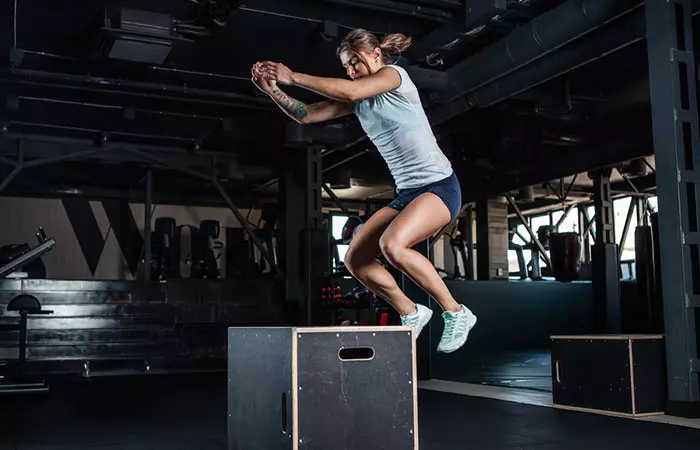
A box jump is a lower-body plyometric exercise for strength conditioning and improving muscle power and reaction time. It helps train the muscles of your legs, especially when you jog on trails.
Box jumps strengthen your thighs and glutes, which makes it easy for you to jog 5 miles at a stretch.
15. Train Downhill
Jogging downhill with control is more difficult than running uphill. Practice jogging downhill without falling or hurling down. It will help build muscle control and improve change of direction ability and aerobic capacity (22).
16. Strengthen Core Muscles
From standing up to jogging, every motion requires good core strength. Planks are amazing for building core strength. If your core is not strong enough, you will not be able to jog for a long duration. Start doing three sets of 30-60 seconds, hold elbow planks and increase your core strength. Alternating between jogging and sprinting can help you with building speed.
17. Hydrate Yourself
Drinking water is important to quench your thirst and replenish fluid loss during exercise. Aim to drink at least 3-4 liters of water per day to prevent dehydration symptoms like headache, fatigue, low energy level, and mood changes (23).
However, make sure you don’t drink too much water while jogging. Take a sip or two when you stop or walk to rest for 10-20 seconds.
18. Beat Yourself
You are your own competition. If you jogged a mile at a stretch today, jog for 5 minutes more after you hit the 1-mile mark.
This will keep you motivated, and instead of comparing yourself with anyone else, you will have a healthy relationship with yourself and be able to move forward and strive to be better than you were yesterday.
19. Stretch
Complete body stretching is important to cool down muscles and give a relaxing effect to your entire body.
Ten minutes of cool-down exercises or stretches help to normalize body temperature, lengthen and relax muscle fibers, and improve your flexibility (24). Gently stretch your hamstrings, calves, shoulders, arms, neck, and back. Consult an expert for learning correct stretching techniques.
20. Sleep

Sleeping and resting help your muscles rejuvenate and recover. When you run or do high-impact or low-impact workouts, your muscles undergo wear and tear. Resting and sleeping help the muscles rebuild themselves bigger and stronger.
Sleep for at least 6 to 7 hours, within 2-3 hours of having dinner, and listen to soothing music if it helps you fall asleep.
Lastly, include cross-training activities like swimming, cycling, or strength training in your routine to increase overall fitness and prevent burnout.
Note: Always pay attention to your physical needs. Consider taking a break or consulting a medical professional if you are in pain.
Moving on, you may improve and maintain your jogging journey with the help of the following strategies.
Motivation Strategies For Jogging Regularly
Staying motivated to jog daily can be challenging, but adopting the right plan can help you stay on track. Here are a few effective strategies.
- Set realistic goals that match your level of fitness. You can gradually push your goals as you improve.
- Track your development with a running app or journal.
- Find a workout partner or join a jogging group to stay accountable and enjoy the activity more.
- Celebrate small achievements. Treat yourself to something nice every time you accomplish a goal. This will help you look forward to such rewards.
While jogging has several benefits, it might not work for everyone. It can have its disadvantages as well. Learn more about them below.
Side Effects Of Jogging
While jogging is a great way to enhance cardiovascular fitness and manage weight, it can put a strain on joints. Research suggests that injury incidents caused by running and jogging are notable. It observed that the knees, ankles, and lower legs are the most commonly affected joints. It is worth noting that these findings were consistent both in people who run long distances and those who don’t. While jogging provides remarkable cardiovascular and fitness benefits, the risk of overuse injuries like tendonopathies and stress-related issues cannot be underestimated (25). The potential side effects notwithstanding, jogging remains a valuable activity when pursued mindfully, and its benefits can be harnessed while minimizing the risks associated with these injuries.
Infographic: 5 Tips To Enhance Your Jogging Technique
Jogging is a great way to engage your major body muscles and improve your overall fitness. It also helps with weight management, improves body posture, reduces the chances of heart disease, and manages blood sugar levels. However, to get all these benefits and more, you need to be jogging right. Check out the below infographic for 5 major jogging tips for improved technique and enhanced health benefits.
Some thing wrong with infographic shortcode. please verify shortcode syntaxFrom aiding weight loss and promoting heart health to improving stamina and building endurance, the benefits of jogging are immense. However, you need to keep a lot of things in mind while doing this slow running exercise — like warming up, investing in good running shoes, maintaining a proper posture, landing your feet smoothly, hydrating yourself properly, doing cardio and cross training exercises, and following breathing techniques. The jogging tips discussed in this article help you achieve desired results, but you will also have to focus on eating right and getting enough sleep. Consult a doctor before starting to jog if you have orthopedic issues.
Frequently Asked Questions
Can I lose belly fat by jogging?
Yes, you can lose belly fat by jogging. Do it regularly, along with following a healthy diet, and you will see a reduction in your belly fat in around three weeks.
Is jogging effective for weight loss?
Yes, jogging is very effective for weight loss, especially if you are in the initial phase of losing the fat.
Can jogging give you abs?
No, jogging will not help you build six-pack abs.
Can jogging tone your bum?
Jogging can help you shed the extra fat from your body, which means it can help slim down your buttocks. But you also have to do these exercises to tone your buttocks.
Can you lose thigh fat by jogging?
Yes, you will lose a significant amount of thigh fat by jogging.
Can you lose arm fat by jogging?
Jogging helps you lose overall body fat. However, you must also do these exercises to get toned arms.
How many minutes should I jog?
This depends on factors like gender, age, fitness level, and nutrition. But, generally, you may jog for about 30 minutes every day. If you are in better health, you can progressively increase your pace or duration for better outcomes.
Should you eat before running?
You can have a light meal 1½ to 2 two hours before starting to run. You also can have a quick snack 30 minutes to an hour beforehand.
Some thing wrong with illustration image shortcode. please verify shortcode syntaxStart your journey to a healthier you with the top 12 jogging tips for beginners. Click on the video below to learn more about jogging to help you lose weight and get fit!
References
Articles on StyleCraze are backed by verified information from peer-reviewed and academic research papers, reputed organizations, research institutions, and medical associations to ensure accuracy and relevance. Read our editorial policy to learn more.
- Effects of self-monitored jogging on physical fitness blood pressure and serum lipids: a controlled study in sedentary middle-aged men
https://pubmed.ncbi.nlm.nih.gov/2286480/ - Exercise for Mental Health
https://www.ncbi.nlm.nih.gov/pmc/articles/PMC1470658/ - Exercise as Treatment for Anxiety: Systematic Review and Analysis
https://www.ncbi.nlm.nih.gov/pmc/articles/PMC4498975/ - Influence of 12-week jogging on body fat and serum lipids.
https://www.ncbi.nlm.nih.gov/pmc/articles/PMC1858858/ - Greater Weight Loss from Running than Walking during 6.2-yr Prospective Follow-up
https://www.ncbi.nlm.nih.gov/pmc/articles/PMC4067491/ - Effects of the amount and intensity of exercise on plasma lipoproteins
https://pubmed.ncbi.nlm.nih.gov/12421890/ - Effects of Aerobic Exercise on Lung Function in Overweight and Obese Students
https://www.ncbi.nlm.nih.gov/pmc/articles/PMC4153158/ - A meta-analysis of impact exercise on postmenopausal bone loss: the case for mixed loading exercise programmes
https://pubmed.ncbi.nlm.nih.gov/18981037/ - Skeletal Muscle Hypertrophy after Aerobic Exercise Training
https://www.ncbi.nlm.nih.gov/pmc/articles/PMC4523889/ - Effects of exercise on anxiety depression and mood
https://pubmed.ncbi.nlm.nih.gov/15518309/ - An effective exercise-based intervention for improving mental health and quality of life measures: a randomized controlled trial
https://pubmed.ncbi.nlm.nih.gov/15226056/ - Relation of low and moderate intensity exercise with acute mood change in college joggers
https://pubmed.ncbi.nlm.nih.gov/9842612/ - Aerobic exercise and endurance: improving fitness for health benefits
https://pubmed.ncbi.nlm.nih.gov/20086470/ - Running exercise strengthens the intervertebral disc
https://idp.nature.com/authorize?response_type=cookie&client_id=grover&redirect_uri=https%3A%2F%2Fwww.nature.com%2Farticles%2Fsrep45975 - Long-term mild jogging increases insulin action despite no influence on body mass index or VO2 max
https://pubmed.ncbi.nlm.nih.gov/2663816/ - The Copenhagen City Heart Study (Østerbroundersøgelsen)
https://www.ncbi.nlm.nih.gov/pmc/articles/PMC4625209/ - Warm-Up Strategies for Sport and Exercise: Mechanisms and Applications
https://pubmed.ncbi.nlm.nih.gov/26400696/ - Warming-up and stretching for improved physical performance and prevention of sports-related injuries
https://pubmed.ncbi.nlm.nih.gov/3849057/ - The prevalence of bad posture and musculoskeletal symptoms originating from the use of gadgets as an impact of the work from home program of the university community
https://www.ncbi.nlm.nih.gov/pmc/articles/PMC9556879/ - Effect of respiratory exercise on pulmonary function balance and gait in patients with chronic stroke
https://www.ncbi.nlm.nih.gov/pmc/articles/PMC6110214/ - Influence of Interval Training Frequency on Time-Trial Performance in Elite Endurance Athletes
https://www.ncbi.nlm.nih.gov/pmc/articles/PMC7246952/ - Efficacy of downhill running training for improving muscular and aerobic performances
https://pubmed.ncbi.nlm.nih.gov/29182895/ - Rehydration during Endurance Exercise: Challenges Research Options Methods
https://www.ncbi.nlm.nih.gov/pmc/articles/PMC8001428/ - Do We Need a Cool-Down After Exercise? A Narrative Review of the Psychophysiological Effects and the Effects on Performance Injuries and the Long-Term Adaptive Response
https://www.ncbi.nlm.nih.gov/pmc/articles/PMC5999142/ - A systematic review of running-related musculoskeletal injuries in runners
https://pubmed.ncbi.nlm.nih.gov/33862272/
Read full bio of Kristen Arnold
Read full bio of Priyanka Sadhukhan
Read full bio of Arshiya Syeda
Read full bio of Himanshi Mahajan

















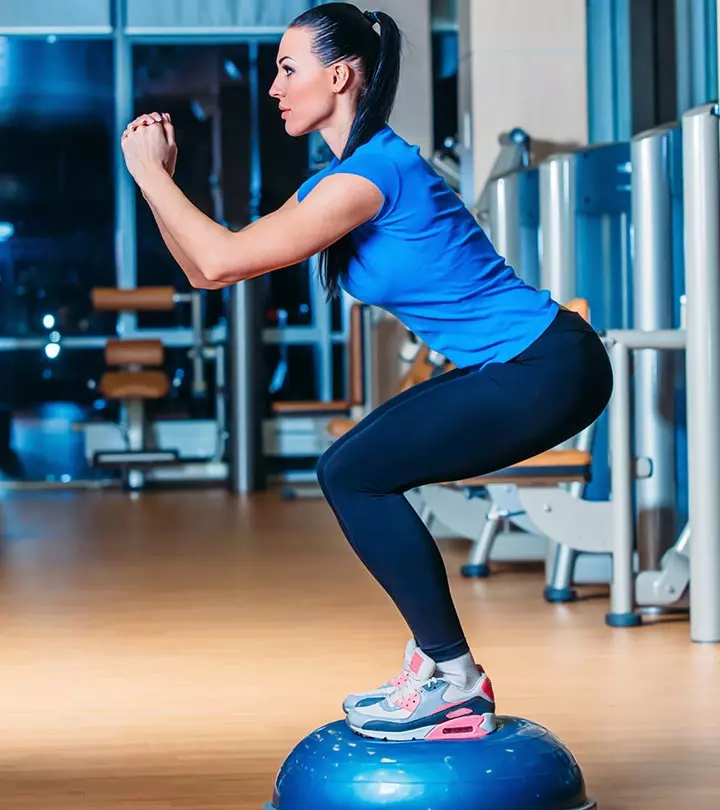
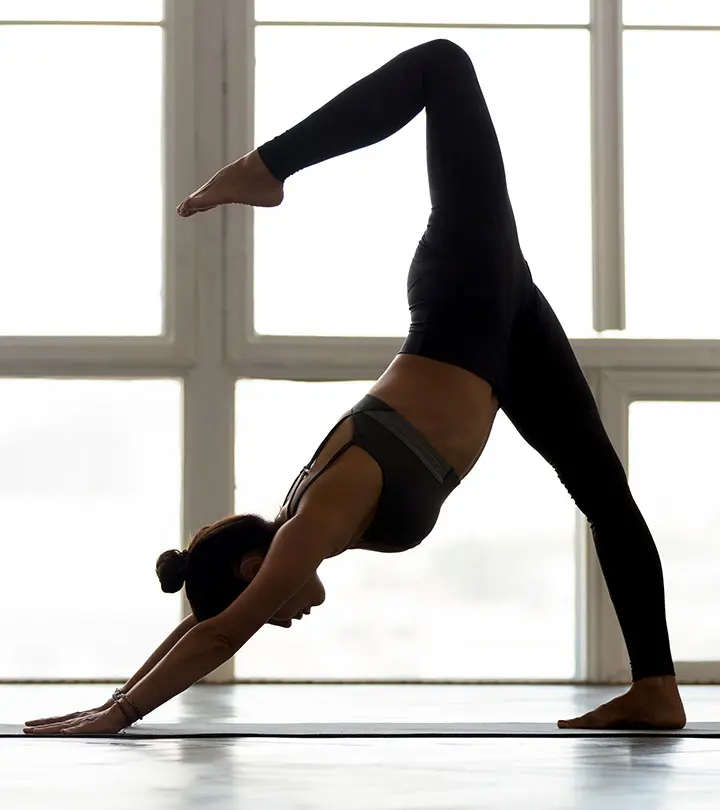
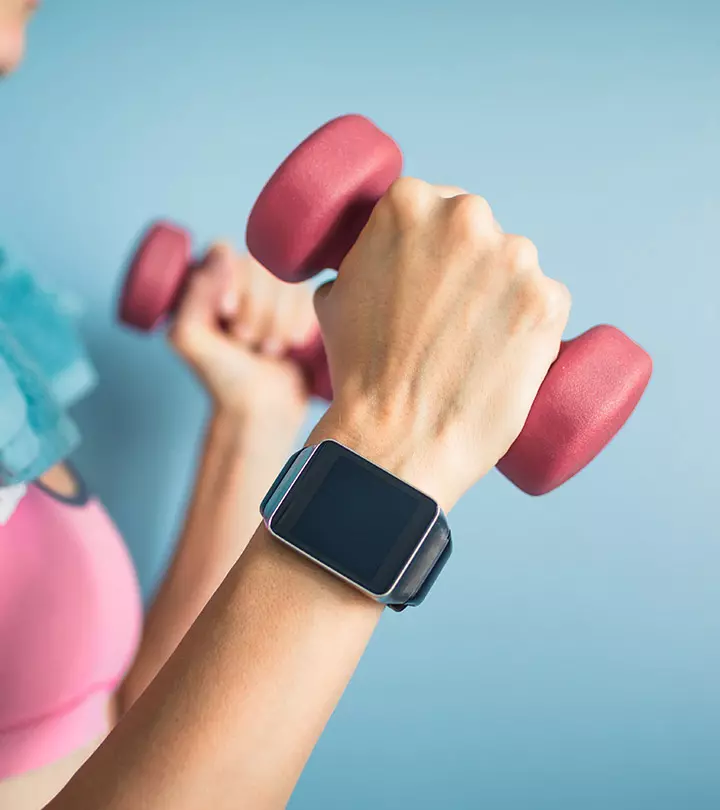


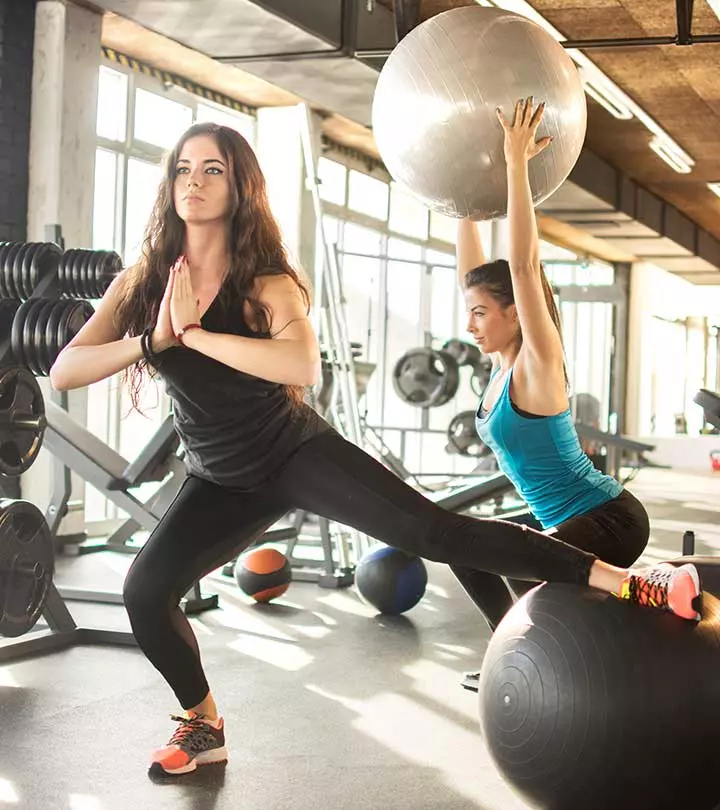


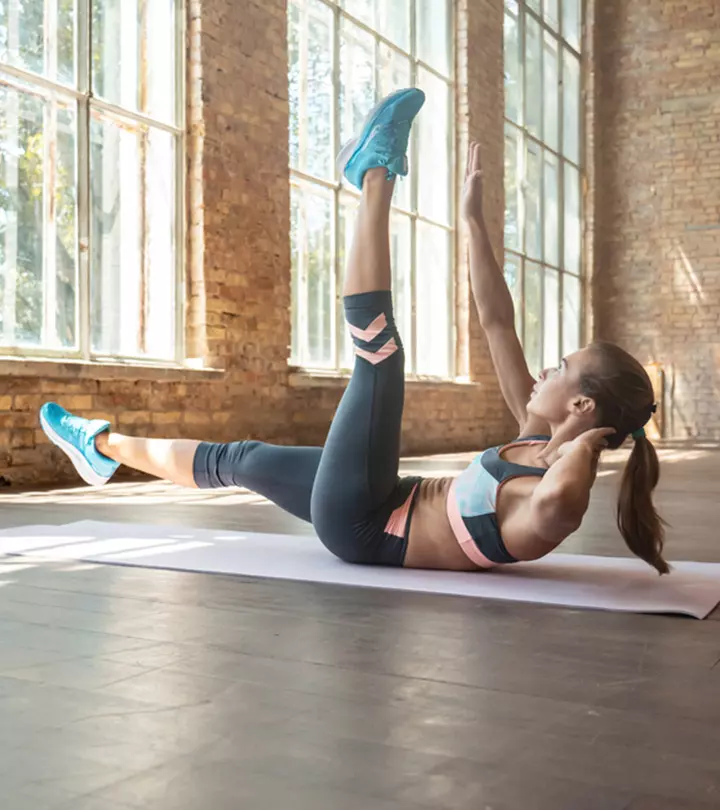

Community Experiences
Join the conversation and become a part of our empowering community! Share your stories, experiences, and insights to connect with other beauty, lifestyle, and health enthusiasts.